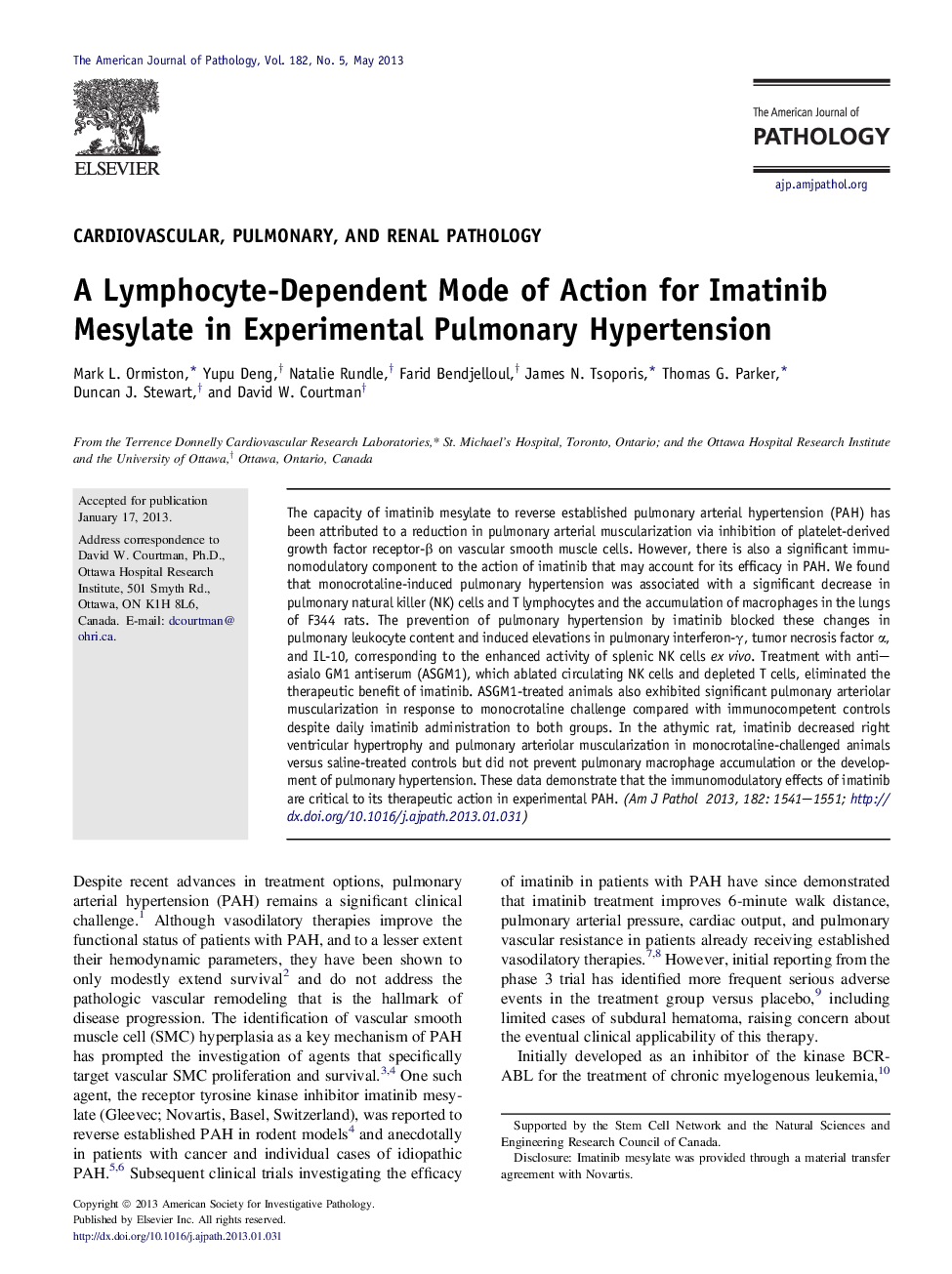| Article ID | Journal | Published Year | Pages | File Type |
|---|---|---|---|---|
| 5934267 | The American Journal of Pathology | 2013 | 11 Pages |
Abstract
The capacity of imatinib mesylate to reverse established pulmonary arterial hypertension (PAH) has been attributed to a reduction in pulmonary arterial muscularization via inhibition of platelet-derived growth factor receptor-β on vascular smooth muscle cells. However, there is also a significant immunomodulatory component to the action of imatinib that may account for its efficacy in PAH. We found that monocrotaline-induced pulmonary hypertension was associated with a significant decrease in pulmonary natural killer (NK) cells and T lymphocytes and the accumulation of macrophages in the lungs of F344 rats. The prevention of pulmonary hypertension by imatinib blocked these changes in pulmonary leukocyte content and induced elevations in pulmonary interferon-γ, tumor necrosis factor α, and IL-10, corresponding to the enhanced activity of splenic NK cells ex vivo. Treatment with anti-asialo GM1 antiserum (ASGM1), which ablated circulating NK cells and depleted T cells, eliminated the therapeutic benefit of imatinib. ASGM1-treated animals also exhibited significant pulmonary arteriolar muscularization in response to monocrotaline challenge compared with immunocompetent controls despite daily imatinib administration to both groups. In the athymic rat, imatinib decreased right ventricular hypertrophy and pulmonary arteriolar muscularization in monocrotaline-challenged animals versus saline-treated controls but did not prevent pulmonary macrophage accumulation or the development of pulmonary hypertension. These data demonstrate that the immunomodulatory effects of imatinib are critical to its therapeutic action in experimental PAH.
Related Topics
Health Sciences
Medicine and Dentistry
Cardiology and Cardiovascular Medicine
Authors
Mark L. Ormiston, Yupu Deng, Natalie Rundle, Farid Bendjelloul, James N. Tsoporis, Thomas G. Parker, Duncan J. Stewart, David W. Courtman,
